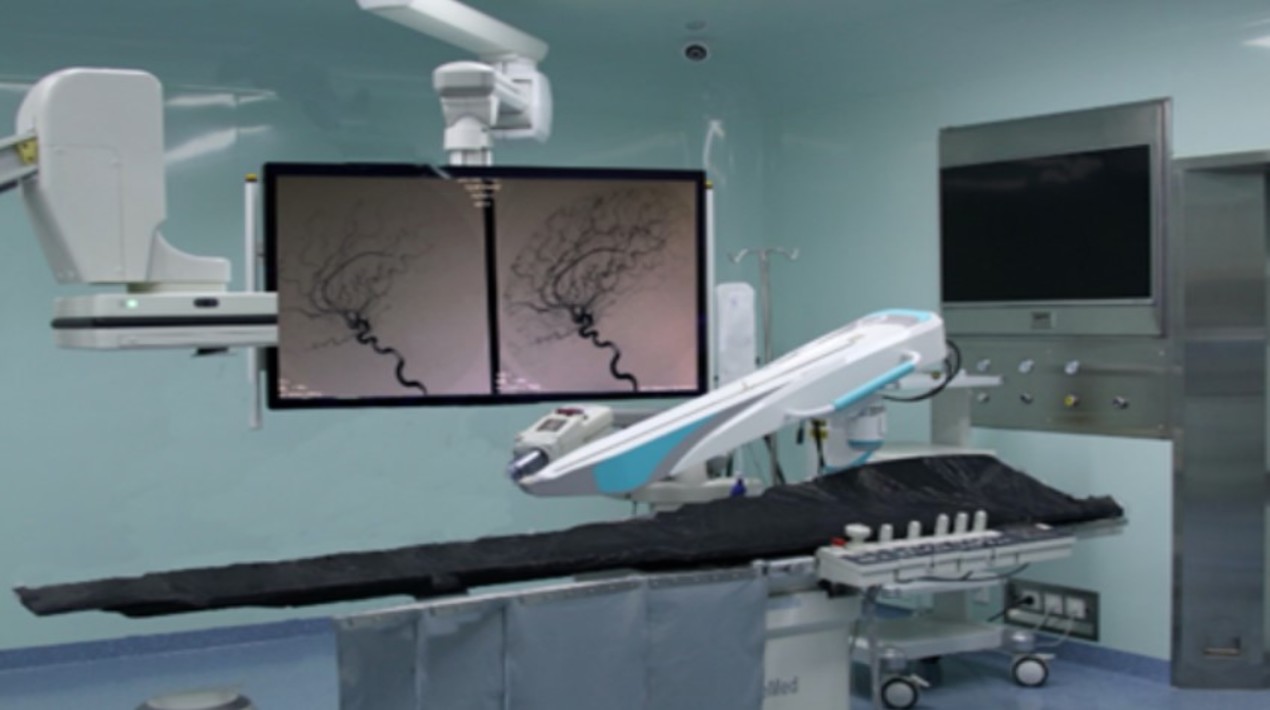
Chinese researchers from the Beijing Institute of Technology developed a vascular interventional surgical robot. The team has cooperated with Beijing Tiantan Hospital and other units to carry out research on core technology optimisation and special consumables of vascular interventional surgery robots. The surgery robot has become the interventional robot product with the fastest research and development progress in China.
As the number of patients with cardiovascular and cerebrovascular diseases increases year by year, the demand for minimally invasive vascular interventional therapy is increasing. In conventional vascular interventional surgery, interventional surgical robot products are limited by technology such as the long-stroke catheters and guidewires for the coordinated delivery of fine ultra-smooth guidewire control, and cannot fully meet clinical needs in terms of accuracy and safety.
How to improve the delivery technology and advance the level of surgery has become a technical problem that needs to be solved urgently at home and abroad. Therefore, the team began 6-year research on minimally invasive vascular interventional surgery robots.
After years of accumulation, the team has made breakthroughs in the delivery technology of interventional devices and proposed a new minimally invasive vascular interventional surgery robot system. To achieve a sterile environment in the clinic, the team optimised and modified the clamping mechanism and the carrying transmission structure of clinical instruments.
The researchers innovatively proposed a direct-push non-fixed transmission technology, which carried out a single hole for the bacteria-bearing part of the robot body, and conducted modular isolation and sterilisation for the part in direct contact with the instruments, so as to achieve a good sterile isolation effect.
For solving the problem of twisting and difficult delivery of ultra-fine and ultra-smooth guidewires, the team proposed a high-torque non-destructive guidewire delivery technology. By analysing and researching the contact part between the ultra-fine guidewire and the jaws, a compliant double four-jaw card mechanism was designed, which increased the torsion force of the guidewire by more than 10 times.
At the same time, new flexible material is used to prevent damage to the super-slip coating on the surface of the guidewire. The breakthrough of key technology has effectively solved the problems of the robot’s inability to assist in the whole process, laying the foundation for the clinical use of surgical robots.
With the support of the project of the National Key R&D Programme of China “Industrialisation Research and Application of Minimally Invasive Vascular Interventional Surgery Robot”, the development of the robot was fully completed. At present, the surgical robot, after further technological upgrades, has taken the lead in entering the clinical trial stage registered by the NMPA (National Medical Products Administration), and 123 clinical trial cases have been completed.
Chinese researchers have developed robots for a variety of functions, including providing emotional support. As reported by OpenGov Asia, Chinese researchers developed a cutting-edge Artificial Intelligence (AI) system to create emotional bonds for users with its 660 million users worldwide. The virtual chatbot is not an individual persona, but more akin to an AI ecosystem. It is in the vast majority of Chinese-branded smartphones as a virtual assistant, as well as most social media platforms. On the mobile app, it lets users build a virtual girlfriend or boyfriend and interact with them via texts, voice and photo messages.
The AI chatbot now accounts for 60% of global human-AI interactions by volume, making it the largest and most advanced system of its kind worldwide. The virtual chatbot was designed to hook users through lifelike, empathetic conversations, satisfying emotional needs where real-life communication too often falls short.
However, providing companionship to vulnerable users does not mean that the virtual chatbot is a substitute for specialist mental health support. The system monitors for strong emotions, aiming to guide conversations onto happier topics.
















